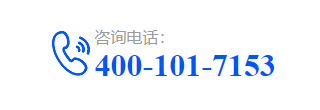
1. Inspection itemsBrush head quality inspection: Focus on the quality of bristles. High-quality bristles should be moderately soft and hard, with a high rounding rate to prevent damage to the gums. Check the rounding of the bristles. If the rounding is not good, the sharp tip of the bristles can easily scratch the oral mucosa; check the firmness of the bristles. During normal use, the bristles should not fall off easily to avoid accidental ingestion. In addition, the size of the brush head needs to be adapted to the oral structure, which can not only fully clean the teeth, but also be easy to operate.
Motor performance inspection: The motor is the core of the electric toothbrush, and its speed stability and power output must be tested. Unstable speed may cause fluctuations in the cleaning effect, and insufficient power cannot effectively remove dental plaque. For example, the speed of the sonic electric toothbrush motor should be able to stably maintain in the nominal high-frequency range to ensure that sufficient fluid power is generated to clean the gaps between teeth, gingival sulci and other parts.
Battery life and safety inspection: Inspect the battery life. A single charge should meet the needs of multiple days of use to avoid the inconvenience of frequent charging. At the same time, the safety of the battery during charging and discharging is tested to prevent dangerous situations such as overheating and short circuits, and ensure the safety of users at home.
Waterproof performance test: Given that the use environment of electric toothbrushes is humid, it is necessary to ensure that their waterproof level meets the standard. By simulating humid environments and immersion tests, check whether there is water ingress and leakage, and ensure that the product can be used normally in scenarios such as sinks and bathrooms.
2. Testing methodsMicroscopic observation method: Use a microscope to observe the rounding of bristles and calculate the rounding pass rate; use a tensile test to test the firmness of bristles, simulate the force of brushing and pull the bristles, and record the number of bristles that fall off.
Instrument test method: Use a professional speed tester to connect the electric toothbrush, monitor the speed changes of the motor in real time, draw a speed curve, and judge its stability; use battery testing equipment to simulate the charge and discharge cycle and analyze the battery performance parameters.
Simulated environment test method: Place the electric toothbrush in a waterproof test box, simulate different humidity and immersion depth conditions, observe whether water enters the inside, and verify the waterproof performance.
3. Testing standardsIn China, GB 4706.59 "Safety of household and similar electrical appliances - Particular requirements for oral hygiene appliances" and other standards are followed to regulate the electrical safety, mechanical performance and other indicators of electric toothbrushes; internationally, relevant international standards such as IEC also provide a basis for product quality control, and export products must strictly meet the standards to ensure global compatibility.
4. Significance of testingFor manufacturers, strict testing can ensure product quality, reduce the flow of defective products into the market, enhance brand image and enhance market competitiveness. For consumers, electric toothbrushes that have passed the test can provide efficient and safe oral care, protect dental health and improve the quality of life. From the perspective of industry development, standardized testing promotes technological innovation, promotes the development of electric toothbrushes in a smarter, more comfortable and environmentally friendly direction, and injects new vitality into the oral care industry.
In short, electric toothbrush testing runs through the industrial chain and is a key step to ensure product quality and help oral health.


 National free customer service telephone 400-101-7153
National free customer service telephone 400-101-7153 
